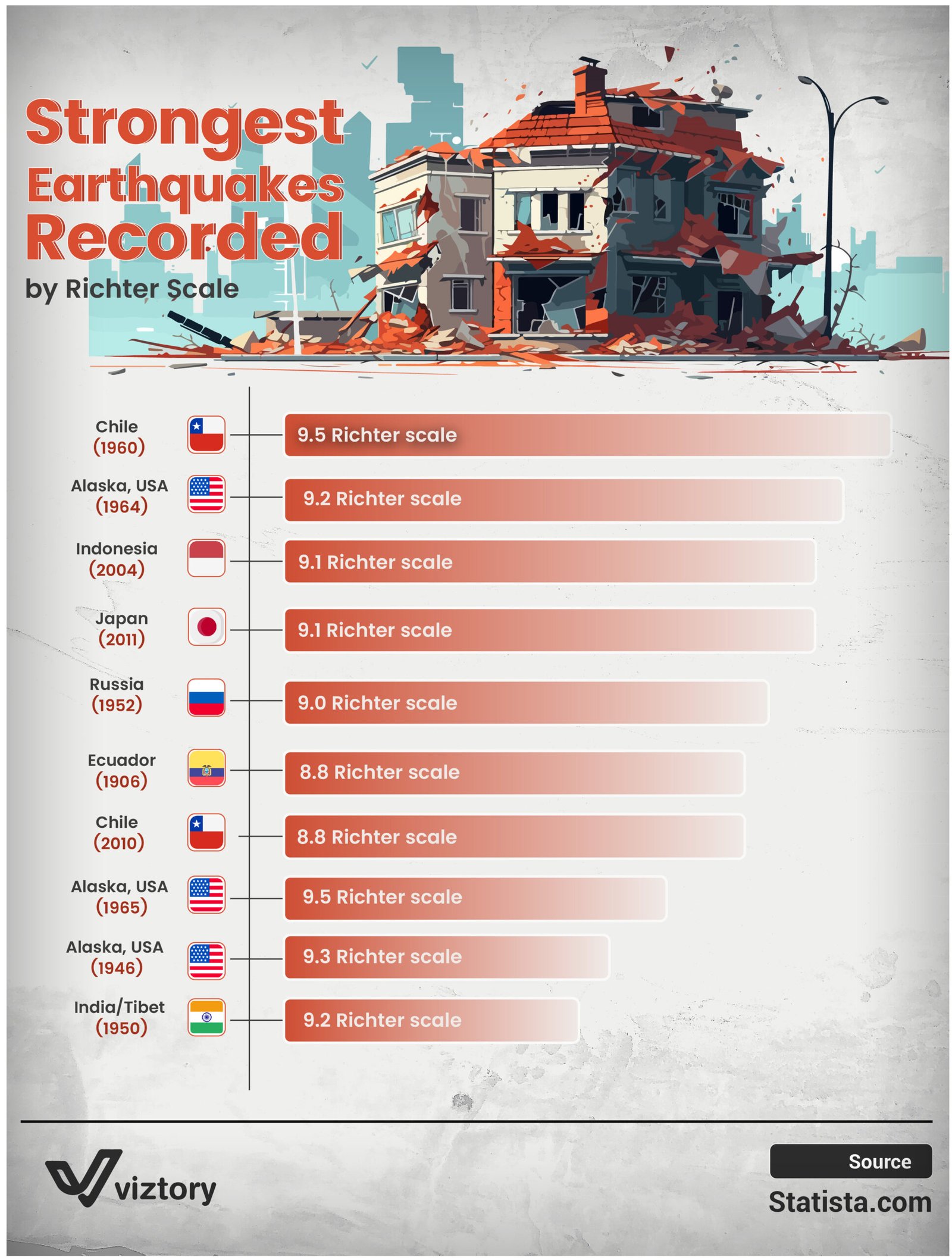Strongest Earthquakes Recorded by the Richter Scale
-
Jan, Sat, 2025
Earthquakes are among the most devastating natural disasters, and their impact goes far beyond structural damage. The healthcare sector plays a critical role in mitigating the aftermath, providing emergency medical care, and supporting recovery efforts. This article explores the strongest earthquakes recorded and their implications for healthcare systems.
Revised List of the Strongest Earthquakes (Adjusted)
Chile (1960) – 9.5 Richter scale
- The strongest earthquake ever recorded. It caused massive destruction and left thousands injured, overwhelming healthcare facilities.
- Healthcare Implications: Emergency response systems struggled to cope, highlighting the need for disaster preparedness.
Alaska, USA (1964) – 9.2 Richter scale
- Known as the “Great Alaska Earthquake,” it resulted in significant casualties and damage to infrastructure.
- Healthcare Implications: The event underscored the importance of mobile clinics and emergency trauma care.
Indonesia (2004) – 9.1 Richter scale
- Triggered a catastrophic tsunami, leading to a large-scale humanitarian crisis.
- Healthcare Implications: International aid played a crucial role in addressing widespread injuries and disease outbreaks.
Japan (2011) – 9.1 Richter scale
- The Tōhoku earthquake caused a tsunami and the Fukushima nuclear disaster.
- Healthcare Implications: Highlighted the importance of integrating radiation health safety into disaster response.
Russia (1952) – 8.0 Richter scale
- This earthquake struck the Kamchatka Peninsula, causing severe local damage.
- Healthcare Implications: Limited access to healthcare in remote areas complicated relief efforts.
Ecuador (1906) – 8.8 Richter scale
- This massive earthquake generated a tsunami, devastating coastal regions.
- Healthcare Implications: Coastal health facilities faced overwhelming patient loads, emphasizing the need for resilient infrastructure.
Chile (2010) – 8.8 Richter scale
- This earthquake led to widespread injuries and structural damage, particularly in urban areas.
- Healthcare Implications: Chile’s healthcare system demonstrated resilience, thanks to pre-existing disaster response plans.
Alaska, USA (1965) – 8.0 Richter scale
- Another significant quake in Alaska, causing widespread damage.
- Healthcare Implications: Highlighted the need for rapid medical response in sparsely populated areas.
India/Tibet (1950) – 8.0 Richter scale
- A high-magnitude earthquake in a region with limited infrastructure.
- Healthcare Implications: Lack of medical resources posed significant challenges in managing casualties.
Preparedness and Future Strategies
- Resilient Infrastructure: Building earthquake-resistant healthcare facilities ensures continuity of care during disasters.
- Training and Simulations: Healthcare workers must undergo regular disaster response training to improve readiness.
- Global Collaboration: Sharing resources, expertise, and financial aid strengthens global disaster response efforts.
By learning from past events, healthcare systems can better prepare for the challenges posed by future earthquakes, minimizing casualties and accelerating recovery.

